Info
Subfamily: Pooideae
Genus etymology: Poa is the ancient Greek name for a herb of grass
Species etymology: annua = "lasting a year" [Latin] referering to its annual habit
Photosynthetic type: C3 (cool season)
Nativity: naturalized - accidental
First recorded in Hawaiʻi: 1838
Map
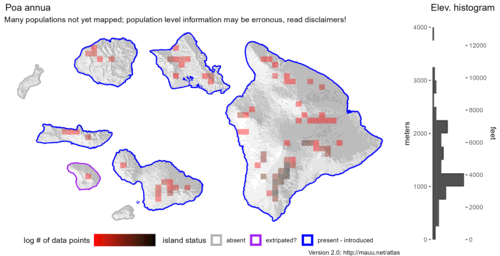

Inflorescence
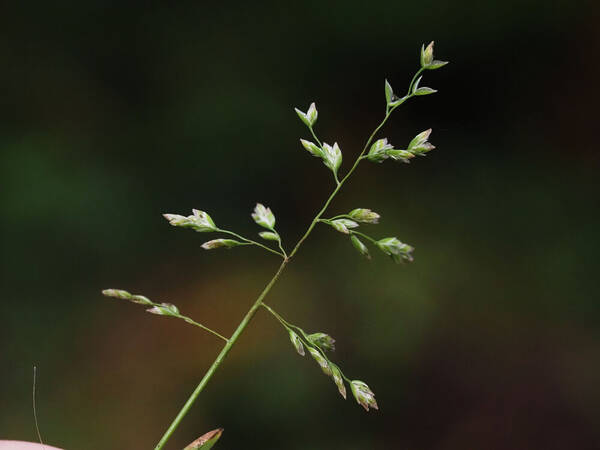
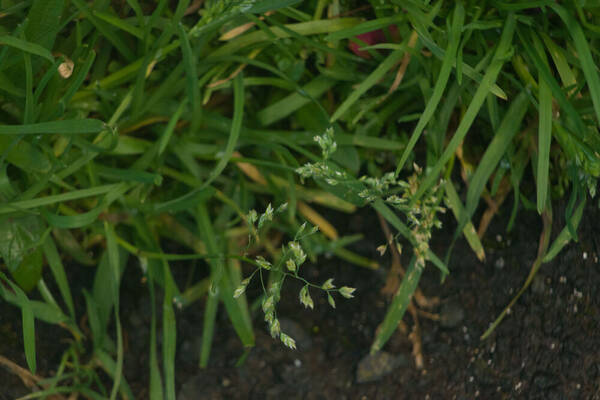
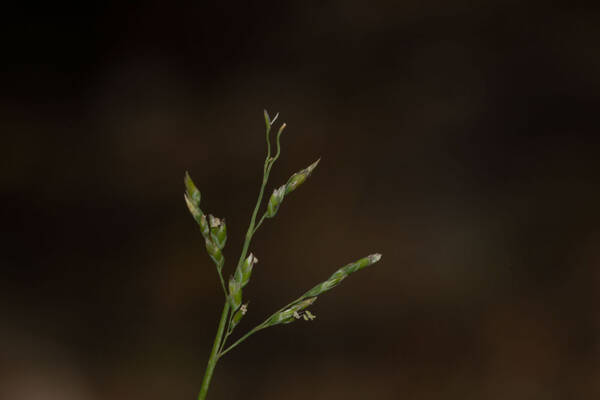

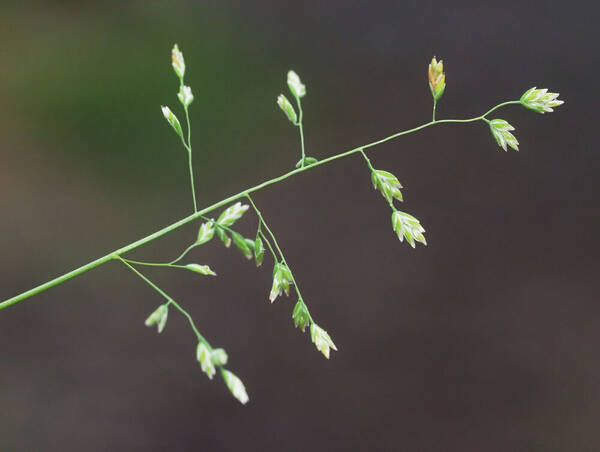
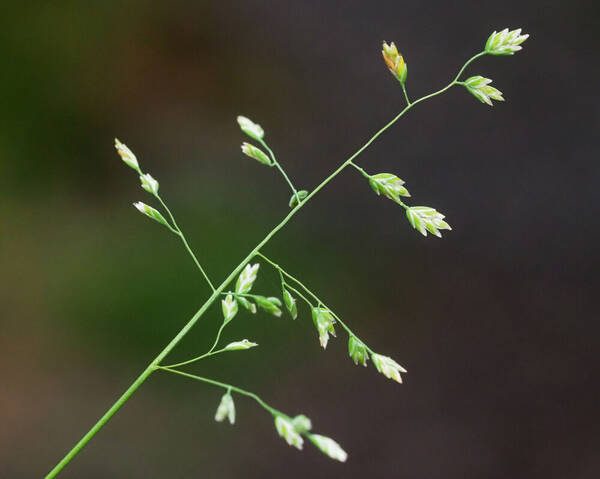
Plant
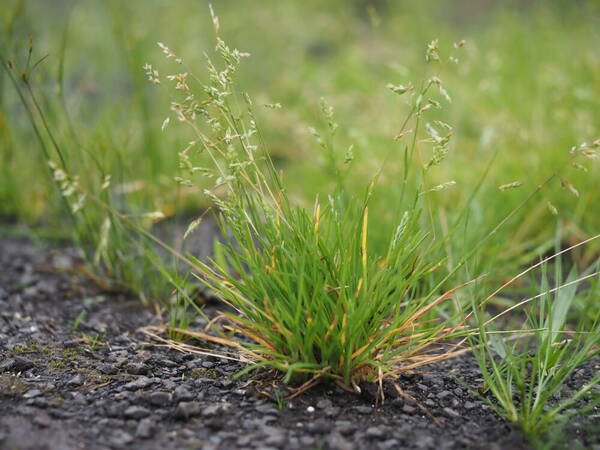
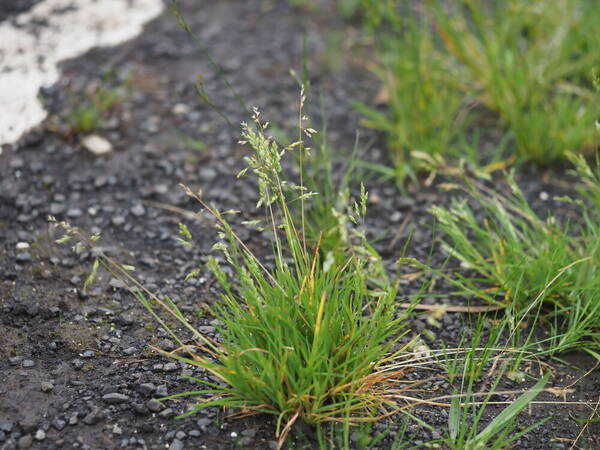
Habit
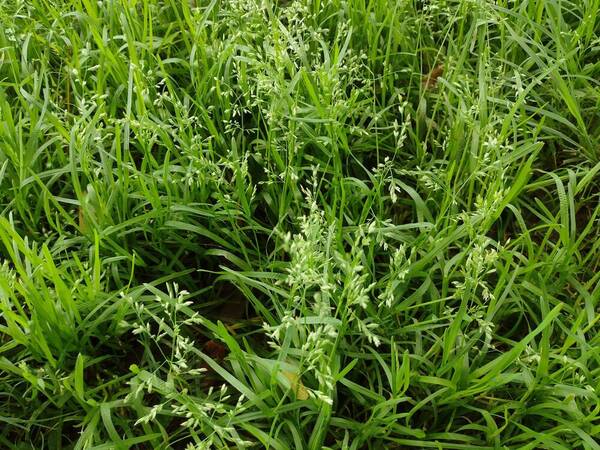
Spikelets
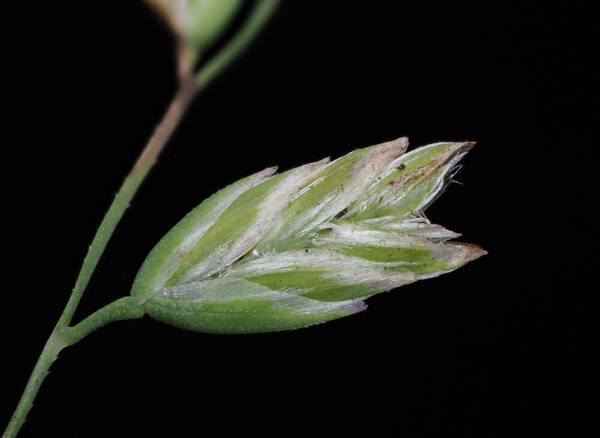
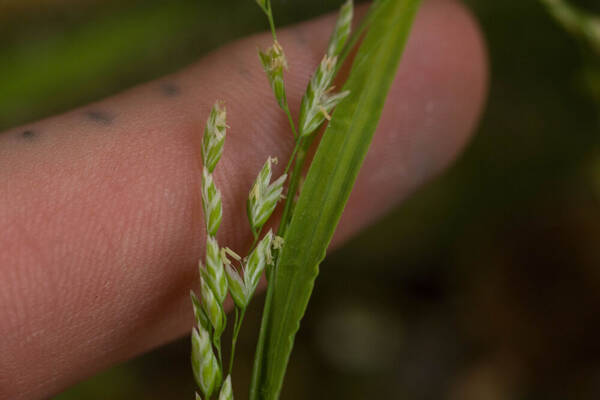
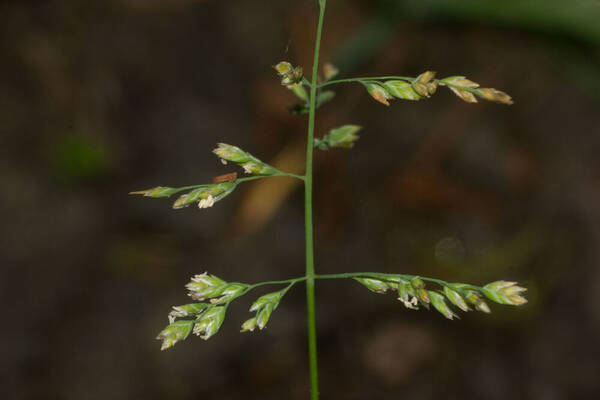
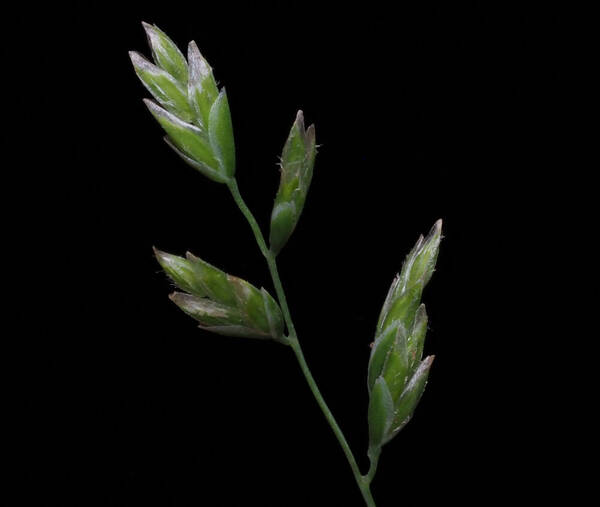
Collar
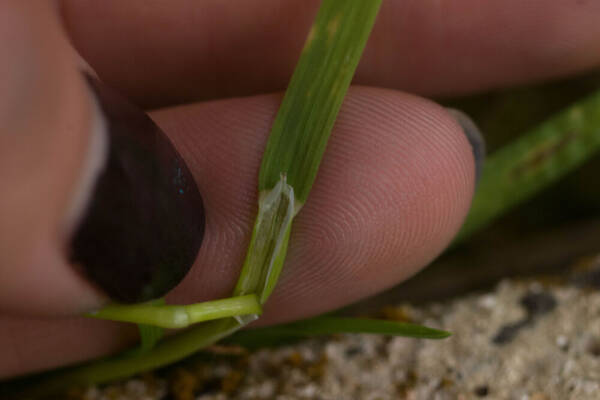
Description
Loosely to compactly tufted annual or short-lived perennial; culms 2.5–30 cm. high, erect, spreading or prostrate. Leaf-blades 1–14 cm. long and 1–5 mm. wide, weak, often crinkled when young, blunt at the tip; ligule 2–5 mm. long. Panicle ovate or triangular, 1–12 cm. long, open and loose or somewhat dense. Spikelets 3–10-flowered, ovate or oblong, 3–10 mm. long; lower glume lanceolate to ovate, 1.5–3 mm. long, 1-nerved; upper glume elliptic or oblong, 2–4 mm. long, 3-nerved, broadest at about the middle; lemmas broadly elliptic with prominent white hyaline margins, 2.5–4 mm. long, obtuse to emarginate (obtuse in side view), glabrous or hairy on the nerves; palea-keels glabrous or ciliate; anthers 0.7–1.2(–1.6) mm. long.
(Description source: Clayton, W.D. 1970. Flora of Tropical East Africa. Gramineae (Part 1). Crown Agents for Oversea Governments and Administrations, London. 176 pp. )
A caespitose delicate annual (very rarely perennial). Culms 2·5-30 cm. tall, 2-4-noded, erect, spreading or decumbent, sometimes rooting at the lower nodes, rather slender, terete, glabrous, smooth. Leaf-sheaths usually loose, somewhat compressed, keeled, smooth, usually glabrous. Ligule 2-5 mm. long. Leaf-laminae 1·5-10(15) x 0·1-0·5 cm., linear or linear-oblong, with the apex abruptly acute or often cucullate, expanded or folded, flaccid, scaberulous along the margins otherwise smooth, glabrous. Panicle 2-8(12) cm. long, open or more rarely contracted, ovate in outline, somewhat stiff; branches usually 2 (rarely 3-5)-nate or solitary, spreading at first, later usually slightly deflexed, smooth; pedicels 0·3-5 mm. long, smooth. Spikelets 3-8(10) mm. long, 3-7(10)-flowered, ovate to oblong in outline, usually crowded, green or often tinged with purple. Inferior glume 1·5-3 mm. long, 1-nerved, ovate or lanceolate; the superior 2-4·25 mm. long, 3-nerved, elliptic or oblong. Lemmas 2·3-4·25 mm. long, broadly elliptic or ovate-elliptic with white hyaline margins, with the apex obtuse. Anthers 0·7-1·2(1·6) mm. long. Caryopsis 1-2 mm. long.
(Description source: Launert, E. & Pope, G.V. (eds.). 1989. Flora Zambesiaca. Volume 10. Part 3. Kew, London. 152 pp )
Plants usually annual, rarely surviving for a second season; not rhizomatous, sometimes stoloniferous, densely tufted. Basal branching intravaginal, innovations common, similar to the culms. Culms 2-20(45) cm, prostrate to erect, slender; nodes terete, usually 1 exserted. Sheaths closed for about 1/3 their length, terete or weakly compressed, smooth; ligules 0.5-3(5) mm, smooth, glabrous, decurrent, obtuse to truncate; blades 1-10 cm long, 1-3(6) mm wide, flat or weakly folded, thin, soft, smooth, margins usually slightly scabrous, apices broadly prow-shaped. Panicles 1-7(10) cm, lengths 1.2-1.6 times widths, erect; nodes with 1-2(3) branches; branches ascending to spreading or reflexed, straight, terete, smooth, with crowded or loosely arranged spikelets. Spikelets 3-5 mm, laterally compressed; florets 2-6; rachilla internodes smooth, glabrous, concealed or exposed, distal internodes less than 1/2(3/4) the length of the distal lemma. Glumes smooth, distinctly keeled, keels smooth; lower glumes 1-veined; upper glumes shorter than or subequal to the lowest lemma; calluses glabrous; lemmas 2.5-4 mm, lanceolate, distinctly keeled, smooth throughout, the keels, marginal veins, and, usually, lateral veins crisply puberulent to long-villous, rarely glabrous throughout, lateral veins prominent, intercostal regions glabrous, margins smooth, glabrous, apices obtuse to acute; palea keels smooth, usually short- to long-villous, rarely glabrous; anthers 0.6-1.1 mm, oblong prior to dehiscence, those of the upper 1-2 florets usually vestigial. 2n = 28.
(Description source: Barkworth, M.E., Capels, K.M. & Long, S. (eds.) 1993. Flora of North America, north of Mexico. Volume 24. Magnoliophyta: Commelinidae (in part): Poaceae, Part 1. Oxford University Press, New York. 911 pp. http://floranorthamerica.org/Poa_annua )
Bright green annuals; culms spreading or sometimes erect, rooting at nodes and forming mats, 0.3-2(-3.5) dm tall, strongly flattened. Sheaths open ca. 1/2 their length, with overlapping margins; ligule 1-3 mm long, obtuse or truncate, often erose; blades lax, folded or flat, 1-10 cm long, 1- 2.5(-3) mm wide, margins scaberulous, otherwise glabrous. Panicles open, pyramidal, 1.5-3.5(-8) cm long, branches spreading, usually rigid; spikelets 3-6-flowered, (3-)4-5.5(-7) mm long, rachilla elongate; glumes glabrous, first glume narrowly lanceolate, 1.5-2.2 mm long, 1-nerved, apex acute, second glume oblanceolate to obovate, slightly longer than first glume, 1.8- 2.7 mm long, 1-3-nerved, somewhat obtuse; lemmas 2.5-3.5 mm long, prominently 5-nerved, the nerves villous toward base, the margins scarious toward apex, pilose toward base; palea 1.5-2 mm long, 2- nerved, keeled, nerves villous, margins hyaline. Caryopsis pale brown, ellipsoid, somewhat trigonal, ca. 1 mm long. [22 = 14, 24-26, 28, 52.]
(Description source: O’Connor, P.J. 1990. Poaceae, pp. 1481–1604. In: Wagner W.L., Herbst D.R. & Sohmer S.H. (eds.)., Manual of the flowering plant of Hawaiʻi. Vol. 2. University of Hawaii Press & Bishop Museum Press, Honolulu )